Learn more about diamonds, and become a diamond expert now.
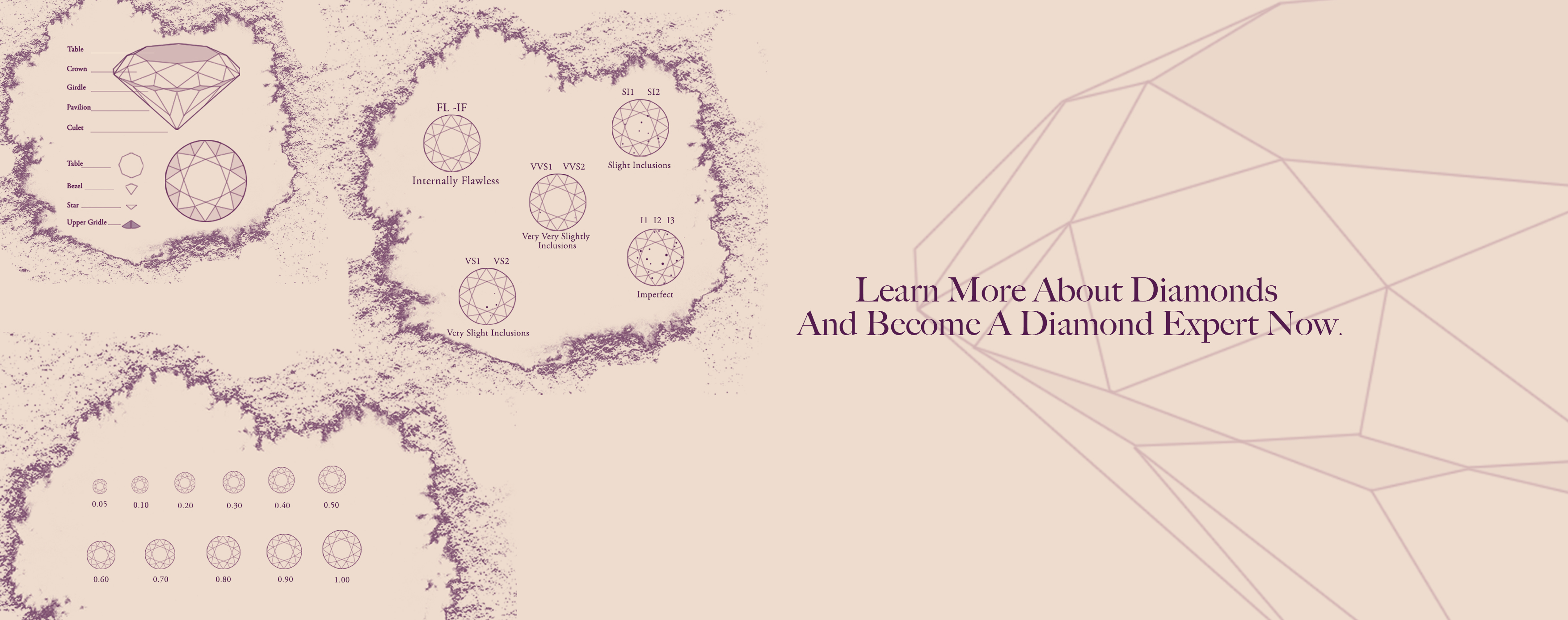
One of the most enduring quotes in the history of diamonds is the famous “Diamonds are Forever.” Ever since their first appearance in the engagement rings, diamonds are associated with words like elegance, uniqueness, and timelessness. These mined pieces of carbon, discovered deep within the Earth’s crust, have now become a sign of status, strength, and eternal love. They are the most common type of gemstone and have become a traditional way to remember marriages and other major life events. Here’s the ultimate guide on what you need to know about diamonds to become an expert all by yourself:
Jump to section:
- What are 4Cs of Diamonds?
- Internally Flawless Diamonds
- More about the anatomy of Diamonds
- The Ideal Cut Diamonds
- Diamond Size Chart
- Diamond Grading
- Difference between a certified and non-certified diamond
- Did you know that…
- How to prepare for a diamond purchase: both online and in-store?
- Pro tip: How to identify fake diamonds?
What are 4Cs of Diamonds?
The 4Cs, considered to be a diamond’s key characteristics, are used to describe and value it. Each of the 4 Cs (Cut, Color, Clarity, and Carat) contributes to the beauty of a diamond, though it is difficult to determine one component alone. Inside each gem, the four Cs communicate with one another as a whole. As a general rule, we recommend prioritizing a high-quality Cut—which has a significant effect on a diamond’s elegance and brilliance—while treading a fine line on Color and Clarity to get the most bang for your buck. Using the 4Cs, you can seamlessly walk a fine line of diamond characteristics and value.
Cut:
The ‘Cut’ of a diamond is perhaps the most significant feature of its quality that influences its beauty. Diamond cut refers to the angles, dimensions, symmetrical facets, brilliance, fire, scintillation, and finishing features of a diamond. These factors have a significant effect on a diamond’s ability to sparkle as well as its overall appearance.

Source: GIA
The proportions of those facets that affect the diamond’s face-up appearance are calculated by the GIA to decide the cut grade of the regular round brilliant diamond – the form that dominates the majority of diamond jewelry. These proportions allow the GIA to decide the best diamond cut by analyzing how well a diamond interacts with light to produce desirable visual effects like:
- Brightness: A diamond represents both internal and external white light. ● Fire: The scattering of white light into all of the rainbow’s colors.
- Scintillation: The amount of gleam a diamond emits, as well as the pattern of light and dark areas created by internal reflections.
Even if two diamonds have the same cut grade on the diamond cut table, the cuts of diamonds can differ greatly. When a cutter aims for full Carat weight, the diamond can be too deep or shallow for optimum light reflection. A diamond can also be cut to reduce the number of inclusions, increasing its visibility while losing optimum sparkle. Even an Ideal cut diamond may have an overly visible yellow tint that detracts from the gem’s elegance. Therefore it’s important to remember that a top grade designation on the diamond cut list, such as Excellent, does not always imply an exceptional diamond cut.
Color:
The GIA color-grading scale is the industry standard for diamonds. The scale starts with the letter D, which stands for colorless, and progresses to the letter Z, which stands for light yellow or brown. The color appearance of each letter grade is specified. Under regulated lighting and precise viewing conditions, diamonds are color-graded by contrasting them to stones of known color. The diamond color map below depicts how each grade appears in comparison to the others.

Source: GIA
Although the diamond color chart depicts how each grade looks, it’s crucial to examine each diamond separately. The color of a diamond will vary depending on the cut, carat weight, and shape of the stone.
The most important feature of Color is to see how it appears colorless in comparison to its surroundings. You may want to make sure that a diamond is free of any tinting that reduces or interferes with the reflection of white and colored light.
Colored diamonds, such as fancy pink or green diamonds, are valuable gems. These diamonds have color grades that are distinct from typical “white” diamonds and do not appear on a diamond color map.
Clarity:
The number, size, relief, design, and location of these characteristics, as well as how they influence the overall appearance of the stone, are all factors in determining diamond clarity. If you’re trying to find out what the best diamond clarity is, bear in mind that no diamond is completely pure. However, the closer it gets to purity, the simpler it becomes.

Source: GIA
As you move along the diamond clarity map, you’ll find that there are more inclusions and blemishes to see. However, not all flaws are apparent to the naked eye. That is why it is important to examine each diamond individually.
Internally Flawless Diamonds
Internally Flawless (IF) and Flawless (FL) diamonds account for less than 1% of all gem-quality diamonds in the world. Because of their exceptional clarity and color, they are rare and costly. These characteristics make them a common choice for engagement rings and other jewelry. Only diamonds with the highest clarity and color gain FL and IF diamond certification under strict laboratory conditions. These diamonds are uncommon because they must follow certain strict requirements. Investors and collectors are interested in some of the bigger diamonds. Smaller FL and IF diamonds, on the other hand, are even more affordable.
Carat Weight:
The word “carat“ refers to the diamond’s weight rather than its size. A 1-carat diamond weighs about a quarter of a raisin and weighs 200 milligrams or 0.2 grams. Two 1 carat diamonds can be very different in size depending on their form and how they are shaped.

Source: GIA
Although carat weight is important when purchasing a diamond, the overall beauty and brilliance should be prioritized.

Each of the four Cs contributes to a diamond’s overall beauty and individuality. A diamond, on the other hand, should be regarded as a whole. Since the eye has trouble distinguishing one diamond attribute from another, such as Clarity or Color, it’s crucial to understand how the four Cs interact within a diamond.
More about the anatomy of Diamonds
The 4 Cs provide a very reliable overview when evaluating a diamond’s consistency. A gemologist or a seasoned diamond buyer, on the other hand, looks at even more minor information in addition to the four Cs. The diamond’s structure and angles, level of fluorescence, degree of inclusions, and polish quality are some of these data.

Source: GIA
Diamonds come in a variety of shapes and sizes, but they do have the same five structural elements. The angles produced by these five elements decide how much light the diamond will reflect, and thus its brilliance.
Table: On the top of the diamond, the table is the highest polished surface. Crown: The top part of a diamond, extending from the table to the girdle, is known as the crown.
Girdle: The section of the diamond where the crown and pavilion meet is known as the girdle. Culet: The culet is the diamond’s bottom facet, which is small and pointed. Pavilion: From the girdle to the culet, the lower portion of the diamond.
When discussing the anatomy of a diamond, it’s also important to consider some main measurements. To begin with, determine the diamond’s diameter and depth. Since both are measured in millimeters, the number of facets is not the only factor to consider. Their proportion is also crucial. The length is divided by the width to get the ratio. The L/W ratio of a diamond of the same length and width (either a perfectly square or round diamond) is 1. The diamond’s class is determined by the girdle width, which ranges from “highly thin” to “extremely wide.” A single point or even a small facet makes up the culet.
Learn more about diamond anatomy from our Anatomy guide.
The Ideal Cut Diamonds
Marcel Tolkowsky, a diamond cutter, and engineering student published his Ph.D. dissertation on diamond cutting in 1919. The dissertation contained measurements and cutting instructions for achieving optimal brilliance and dispersion from a diamond. The ‘Tolkowsky slash’ revolutionized the diamond industry. Over time, the equations became more precise, and the expression “ideal cut” became the standard.
The word “ideal cut” refers to the diamond cut grade. Ideal cut diamonds have the most natural symmetry, angles, light reflection, proportions, and radiance of any gemstone. The fire and brilliance of an ideal cut diamond would be precisely proportioned to refract light in the right angles, leaving the audience mesmerized. It is commonly used as a standard to which all other diamonds are graded. Since ideal cut diamonds are so rare, only two brilliant cuts are available: princess cut and round cut.

Diamond Size Chart
Diamonds can be weighed in carats or measured in millimeters. Although carat weight is the traditional unit of measurement for loose diamonds, it’s also important to think about millimeter measurements and ratios when choosing the best choice for your budget.
You can easily calculate the size of your ring using the online ring size guide. There’s no need to go to a jeweler or wait for a ring sizer to come to your house to measure your ring size. You can now do it from the convenience of your own home or on your mobile device with our ring size guide
Diamond Grading
Diamond certification (most commonly from the laboratories GIA, AGS, and HRD) is a document issued by an independent third-party lab that defines a diamond in all of its aspects.
A grading body will issue a lab report or certificate that defines different aspects of the diamond, such as color, transparency, weight, and width. Using professional instruments such as a loupe or microscope, trained professionals examine, scrutinize, and weigh the diamonds. It’s important that you should obtain and review the lab certification for each diamond you’re considering before the purchase.
There are three major reasons why diamond certifications are so relevant. To begin with, a diamond certification verifies that the stone has been checked and certified to be genuine. Second, diamond quality is shown by valid diamond certifications. Finally, diamond certifications aim to level the playing field between a diamond buyer and a diamond seller.
Three of the most trusted diamond grading laboratories are the Gemological Institute of America (GIA), The American Gem Society ( AGS), and Hoge Raad Voor Diamant (HRD) Antwerp.
Gemological Institute of America (GIA)
The GIA (Gemological Institute of America) is the most well-known and well-respected diamond grading organization in the world. They are highly durable and provide the greatest degree of confidence when buying a gem.
The GIA has no financial interest in the selling of the diamond and rates diamonds based on several characteristics and elements, including the diamond’s evaluation date, measurements (in millimeters), cutting style, and diamond form, to name a few.
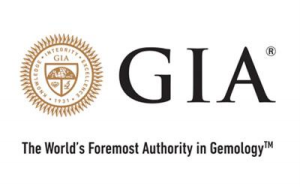
The American Gem Society ( AGS)
The American Gem Society (AGS) takes pride in being the first laboratory to have diamond cut grades. The AGS has been providing its cut grade scale from 0 to 9 (with 0 being called “ideal”) long before the GIA launched its cut grade a few years ago.
When it comes to diamond grading, the AGS takes a rational and cautious approach. As a result, they have earned a reputation as one of the world’s most prestigious gemological laboratories. An AGS certificate guarantees the buyer an effective diamond assessment and examination.

Hoge Raad Voor Diamant (HRD) Antwerp
The HRD currently represents the global diamond exchange to diamond organizations and government agencies. As a result, it keeps track of and reports on more than half of the world’s loose diamonds. HRD also leads the industry in advanced diamond and gemstone research and education. As a result, buyers and jewelers hold an HRD diamond certificate in high regard.
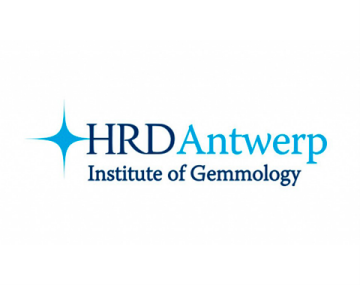
Difference between a certified and non-certified diamond
A certified diamond has been assessed by a third-party laboratory and is accompanied by a certificate, whereas a non-certified diamond does not. Since they’ve been checked by a licensed gemologist, accredited diamonds can be trusted more. It’s difficult to tell whether a diamond’s color and cut consistency are what the seller says they are with a non-certified diamond. As a consequence, we only suggest accredited diamonds from the GIA and AGS, two reputable laboratories.
Here are a few steps to identify for yourself certified and non-certified diamonds:
- Verify that the certification number on the certificate and the certification number on the side of the diamond match. A microscope will be available in the store for you to check whether they fit. It’s fine if they do play.
- Checking the diamond’s weight. You can use the equipment in the store to calculate the diamond’s weight and size to use this form of testing. You may also make the store calculate the diamond’s length, width, and height to see if they fit the figures on the report.
- Keep an eye out for flaws. Take a closer look at the diamonds to see if they have any defects and if the study mentions them. However, bear in mind that certain scratches are so small that we might not be able to see or remember them. This move might be a little difficult, but if it doesn’t work, you can try the other two methods mentioned above.
- Check them out on the GIA website and enter the necessary details, such as the diamond’s reported number and information, to see if they’re right.
Which is the best for diamond educational purposes: GIA or IGI?
The GIA course is the most trusted and valued gemmologist course in the industry, and it covers all facets of diamonds. It will instruct you on what a diamond is and the features of diamonds in a much inclusive manner. The most important value that GIA education adds is that it provides you with a certificate of a GIA certified gemologist, which is one of the greatly valued certificates in the diamond industry.
On the other hand, if you are looking to concentrate on a realistic, hands-on approach, IGI courses are typically short—although some can last up to three months. Each engaging and hands-on class is designed to provide you with the knowledge and expertise needed for your IGI Diploma without requiring you to take time away from your job.
To conclude, eventhough IGI educational courses provide you with all of the knowledge about diamonds, there is no comparison between IGI and GIA certificates in the diamond industry.
Did you know that…
- 300 BCE, diamonds were being used to engrave gemstones in India.
- Diamonds can be combustible. A diamond must be heated to between 1290 and 1650 degrees Fahrenheit to be burned.
- The most popular color diamonds in jewelry are D-to-Z, but diamonds come in every color of the rainbow. Blue, green, orange and red natural colored diamonds are the rarest, while yellow and brown are the most common.
- The Cullinan diamond, which weighs 3,106 carats (ct.) and was found in 1905, is the world’s largest rough diamond.
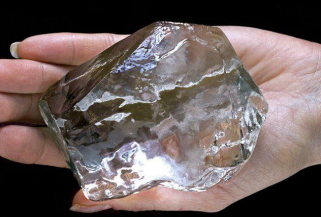
- In 1477, Archduke Maxmillian of Austria gave Mary of Burgundy a gold ring with an M spelled out in diamonds, which was the first recorded use of a diamond engagement ring. ● The most impressive diamond fact of all is that scientists have found a planet that is one-third pure diamond and believed to be mainly made of carbon. The planet, called “55 Cancri e,” was discovered in 2004 and orbits a nearby star in the Milky Way. Even more remarkable fact is that astronomers have discovered a star that resembles a ten billion trillion trillion carat diamond. After the Beatles’ song “Lucy in the Sky with Diamonds,” they called the star Lucy.
How to prepare for a diamond purchase: both online and in-store?
When it comes to picking a beautiful gem, it’s all about narrowing down the form and selecting high-quality choices for the 4Cs without going overboard. Then you’ll compare individual diamonds to see which one has the most fire and brilliance. To find a beautiful diamond while remaining within your budget, follow our step-by-step guide below.
- Pick a Diamond Shape
The shape of your diamond serves as the starting point for the design of your ring. The most common diamond shape for diamond rings is the round brilliant, which has the most brilliance. Some people prefer a more unusual shape, such as a Cushion Cut or an Oval. You should ask your partner’s family and friends if you’re not sure what she wants. To narrow down your quest and compare diamonds, choose a shape, to begin with.
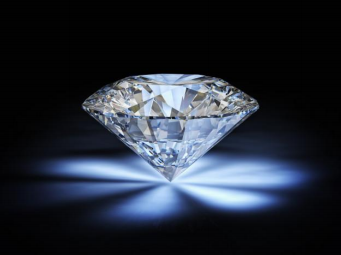
- Decide on a Carat Weight
Is your future fiance looking for a 1 or 2-carat diamond? Are you looking for a stone that stands out but isn’t too flashy? Choose a carat weight range that you’re willing to accept, such as 0.95 to 1.08 carats. The price rises as the carat weight rises.
- Focus on the Diamond Cut
The cut consistency of a diamond has the greatest effect on its appearance. While cut grades aren’t uniform for all vendors, we just recommend Excellent and Ideal cut diamonds in general.
4.Determine the Color Grading Scale
When it comes to diamond color, the aim is to find a diamond that appears white. To get a colorless diamond, though, you don’t have to pay for a D or E diamond. Diamonds in the G to I range appear white but are much less costly.
It’s important to note that different shapes represent color at different intensities, so the color you select to match the diamond’s appearance with its price will be heavily influenced by the diamond shape you choose.
- Decide on a Metal for the Ring
The metal you choose for a ring influences the overall appearance of the piece. White gold and platinum have been popular for a long time, and they both have a sleek, modern appearance. They’re also ideal for diamonds graded in the colorless to near-colorless ranges–D through J on the GIA color scale–because they draw attention to the diamond’s colorlessness. When one of these diamonds is set in yellow prongs, it takes on a yellowish hue.
- Decide on the Budget
The notorious budget rule from the 1980s is “at least two months pay,” but what you can care about is how much you can afford depending on your finances. Here’s a much better suggestion: Learn the four Cs, shop around, and find a ring that suits your budget. In the end, what matters is how much love the ring represents, not how much money you spend.
- Choose a Jeweler
Since an engagement ring is such a large investment, you’ll want to buy it from a reputable jeweler. Start by searching for a jeweler who has received a certificate from a respectable institution such as the Gemological Institute of America (GIA).
- Check the Certificate
Insist on a diamond grading study when purchasing diamonds. The report would eliminate all doubt from your purchase decision by supplying you with the exact quality characteristics of the
diamond. If the diamond has been processed to improve its color or clarity, the report will state so. The Gemological Institute of America (GIA) provides several diamond grading studies.
Once you’re satisfied with your stone, purchase it along with a metal setting of your choosing.
Pro tip: How to identify fake diamonds?
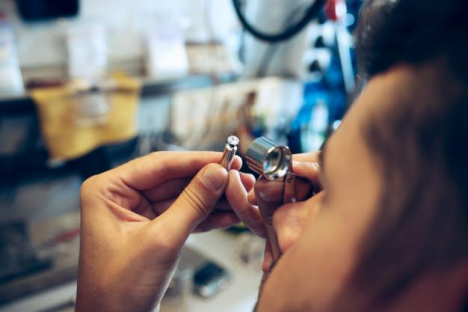
Disclaimer: Although these tips are helpful and realistic, no single test can be considered definitive. A diamond specialist has the requisite expertise and equipment to assess whether a diamond is genuine or not.
- Test with water
Fill a normal-sized drinking glass with water to 34% volume. Drop the loose stone into the glass with care. It’s a true diamond if the gemstone sinks. The water test decides whether your stone suits the density of a genuine diamond.
- The ‘Read-Through’ test
Place the diamond flat side down on a page of a newspaper in an environment with a lot of lettering to measure its refractivity. Make sure the lighting is clear and there are no shadows cast on the diamond by artefacts or people.
The diamond is fake if you can read the letters in the newspaper, even if they are a little blurry. If the diamond is genuine, its facets can refract light in several directions rather than a straight line. You won’t be able to see straight through the diamond and make out the letters on the paper due to the refraction of light.
- Fog test
Hold the diamond or ring between two fingers and blow on it with a puff of air to perform the fog test. Because of the moisture and heat in your breath, a light fog will appear on the diamond.
If the fog clears soon, the diamond is authentic. It’s most likely a fake diamond if the fog takes several seconds to disperse.

